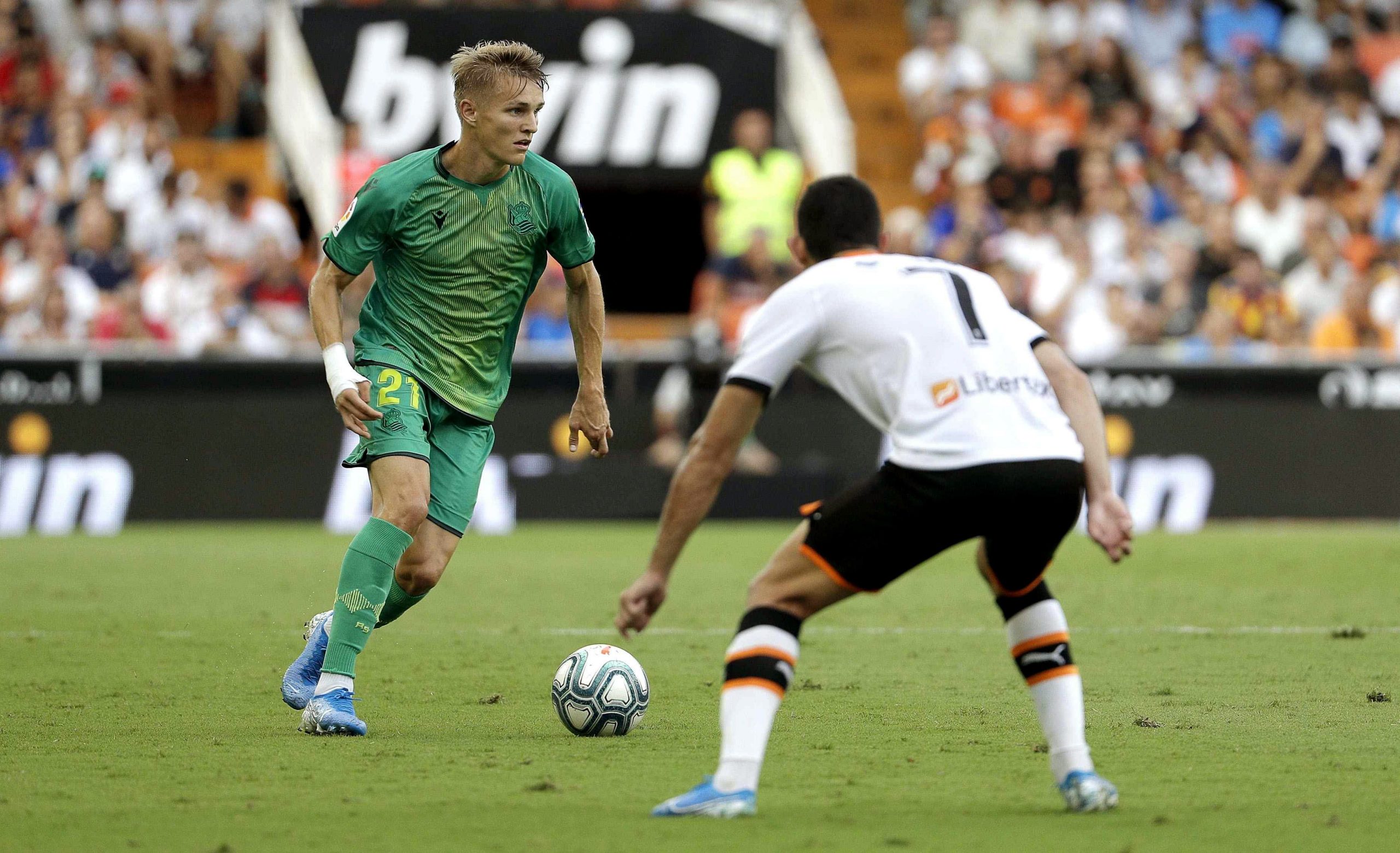The mental change that has transformed Martin Ødegaard from lost talent to decisive playmaker resembles the one that helped Zlatan Ibrahimović step up his game.
The year was 2004 and the Swede had joined Juventus from Ajax, where he had averaged about a goal every two league games. That wasn’t good enough for Fabio Capello, the Juve coach, who told him that he was going to knock the Ajax style out of him. What Capello wanted was fewer tricks and more goals, so he put Zlatan through relentless shooting drills. The drills flicked a switch. “A little of Ajax has stayed with me – the quality,” Zlatan has said. “But even if I now play out of the area more and always look to do the kind of move that motivates me, the first thought I have is to score and to win. That’s Capello’s lesson.”
A similar decisiveness has galvanised Martin Ødegaard, the Norwegian wunderkind. When Ødegaard joined Real Madrid at the age of 15, he began to flounder in the reserves, and the comparisons shifted from Lionel Messi to Freddy Adu. But at 20 Ødegaard has returned to Spain with Real Sociedad, whom he joined this summer on a two-year loan from Madrid. The playmaker has become a key cog at La Real after two games and struck a late winner at Mallorca on Sunday. While his touch is as silky as ever, his approach has changed since those troubled days in Madrid.
Back then Ødegaard arrived as a mini galáctico, having toured Europe with his family in search of a top club. As a kid who had danced around defenders twice his age (and size) in the Norwegian top flight, Ødegaard could pick and choose. Alongside his father, Hans Erik, a former professional footballer, he opted for Madrid, who told him that he would train with the first team and play for Castilla, the reserve team, who had just slid to the third division. Florentino Pérez invested a lot of time and personal prestige in luring him to the capital, and when Ødegaard touched down in January 2015, Madrid presented him in front of the press. Then the season turned into a disaster.
Castilla were on course for promotion under Zinédine Zidane, who was making his debut as head coach. But when Ødegaard showed up, their form dipped. Sections of the Madrid press reported that his wages – said to be £80,000 a week, but never confirmed – were causing jealousy in the squad. Ødegaard, it was reported, was failing to integrate with his teammates. By summer Castilla had finished seventh, Zidane looked bad and Ødegaard had his critics. Whether Ødegaard had actually made a negative contribution was questionable – Zidane looked lost as a tactician, and plenty of players deserved blame – but this was not the start anyone had in mind.
While Ødegaard settled more over the next 18 months, he seemed to have lost confidence along the way. The ambitious through balls had been replaced with square passes. Playing it safe made him harder to criticise, but also harder to praise. Then in January 2017, Madrid decided that a division packed with bruisers and muddy pitches in Basque mountain villages perhaps wasn’t the best place for a skinny 17-year-old to develop. When Ødegaard went on loan to Heerenveen, he had played 62 games for Castilla and scored five goals.
Another rough start awaited in the Netherlands. During the first months Ødegaard was benched and picked up an ankle injury, and he did not become a regular until the 2017/18 season. At that point everyone could see his talent: the silky first touch, the neat close control, the pirouettes, the killer passes weighed with perfection. At his best Ødegaard glides across the pitch, light as a feather, cutting inside on his left foot. Yet Ødegaard finished his first full Eredivisie season with two goals and one assist. How could such a talented player create so little?
While some stats suggested his output should have been better, Ødegaard needed to change something. By the time he had joined Vitesse on a one-year loan, he was working hard to boost his stats. He was practicing his shooting. He was focusing more on making the final pass. He did mental visualisation. The goal was to become more aggressive, direct and decisive. Stats are not everything, Ødegaard told a Dutch newspaper, but they do form the basis of trust.
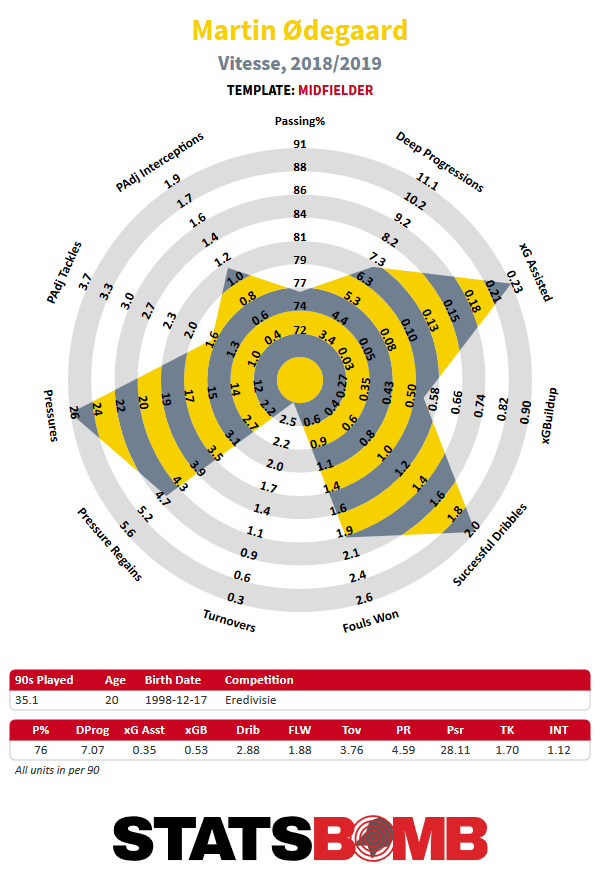
After his first eight league games yielded one assist, Ødegaard got the boost he needed with a goal in a cup game against Heracles. Playing as a right midfielder in a 4-4-2, he went on to fire home nine goals and rack up 12 assists in 35 league games. Vitesse came fifth and he made the team of the season. He never burdened the team with slack defensive work, but showed the combination of creativity and industry that so many of the top coaches treasure. His expect assist per 90 of 0.34 was the fourth highest in the league.
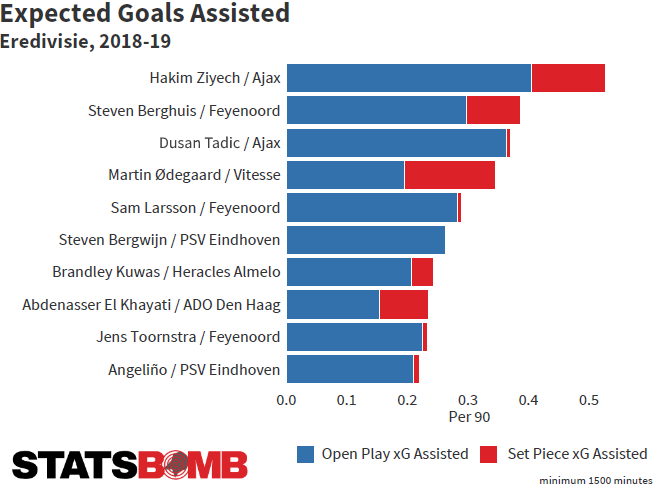
The key to his creativity was not just a new resolve to try the unexpected, but the freedom granted to him by the coach, Leonid Slutsky, to drift into central positions.
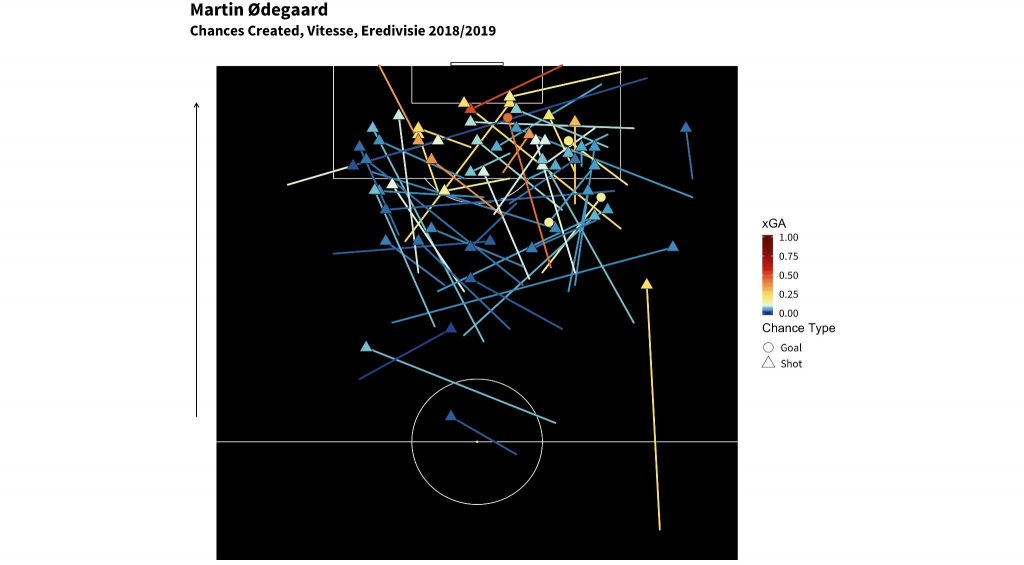
Ødegaard might struggle to maintain his goalscoring rate at Real Sociedad. At Vitesse he would let rip near the edge of the box, which led to a modest non-penalty xG of 4.56. To keep up his average he might have to improve his ability to take up positions in the box, à la Mohamed Salah, although this is hard for a player who is so often involved in creating the chances in the first place. Alternatively Ødegaard might have to become a sniper à la Philippe Coutinho and hope to keep beating his xG from outside the box.
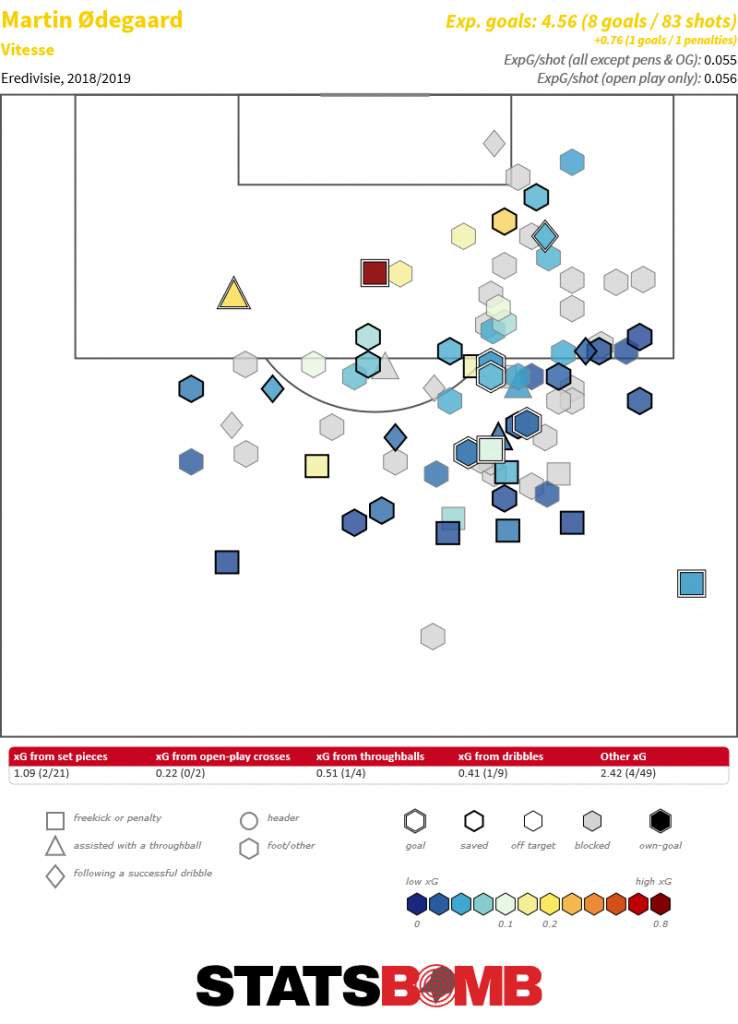
In any case Ødegaard’s primary function is as a playmaker. Real Sociedad missed a player of his kind last season, having lost Sergio Canales to Real Betis a year ago. The coach, Imanol Alguacil, has told Ødegaard to organise their attacks and make the final pass. Ødegaard has thrived in his first two outings. In his debut, a 1-1 draw at Valencia, he played as an attacking midfielder in a 4-2-3-1 and completed nearly twice as many final-third passes as anyone else.
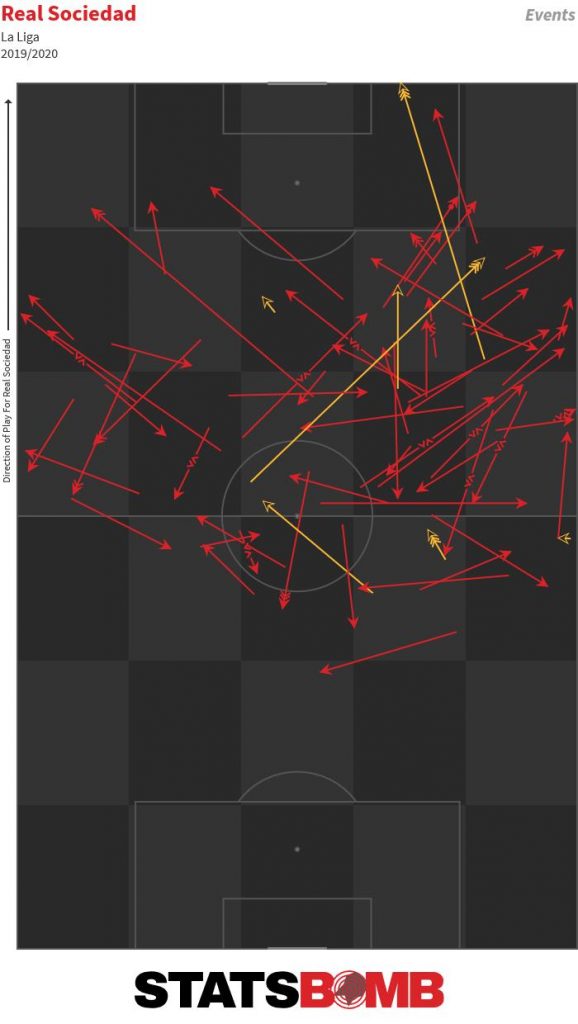
At Mallorca on Sunday he was less influential – until he started a counter-attack that he finished off by lifting the ball over the keeper.
The promising start indicates that Ødegaard is back on track. He is yet to be taken off the pitch by Imanol, who is used to working with youngsters after spells with the club’s youth teams and the reserves. Ødegaard recently extended his contract with Madrid to 2023, a sign that Madrid have him in their plans. His aim for the next two years will be to show that he can be a key player in La Liga, and win a place at Madrid when the loan ends. Based on his displays so far, that goal at last seems to be within reach.
